Gabrielle Garland
"I don’t want to impose a particular meaning on a space or a painting, but I want to study and document all the ways we experience space.“
Gabrielle Garland (b. 1968) is a painter based in New York. Garland received her BFA from The Art Institute of Chicago and her MFA from the University of Chicago. Over the last decade she has been working on a series of images based in, on, and around architecture, portraits of apartments and houses featuring uniquely American interiors and exteriors. These paintings utilize a wide range of mark-making devices and an elastic perspective that draws out the specific personality of each domicile. Her work has been shown in solo exhibitions at Taymour Grahne Projects, London, UK (2022); Corbett vs. Dempsey, Chicago, IL (2020); and group shows at DeVos Art Museum, Marquette, MI (2022); 1969 Gallery, New York, NY (2020); and Campbell Project Space, Sydney Australia (2018), amongst others. Garland has been featured in Make Literary Magazine (2014), Newcity Art (2013), and Chicago Art Review (2011). She is represented by Corbett vs. Dempsey and The Pit and Miles McEnery Gallery in New York City,
MEPAINTSME: So tell me a little about yourself, where are you from originally?
GABRIELLE GARLAND: I am from New York City. I was born at the now defunct Saint Vincent’s Hospital. My parents are artists, they met in art school at Herron School of Art and Design in Indianapolis, Indiana, before moving to the city and getting an apartment in the Chelsea Hotel. Soon after they had me they moved to the East Village. I still live in that same apartment!
MPM: That must be something to still live in the same apartment you grew up in?
GG: I have vivid memories, as a child, of not being able to see over the top of the little stove that’s been here since I was a baby.
MPM: What was it that originally drew you to your subject matter?
GG: My mother started a decorative painting company when I was young, and I grew up working with her on all kinds of different projects. That experience has been a major influence on my career as an artist. I developed a strong association between painting and built space. But rather than painting on the surface of a built space, I represent built spaces in my own work.
MPM: You’ve described these works as House Portraits. You don’t depict any people in your interiors and exteriors — why is that?
GG: My paintings are bereft of human form, but to me it feels like someone just stepped out of the frame. I hope my audience imagines characters (or themselves) inhabiting the spaces I paint and draw. Using the movie quotes on my Instagram account (with each painting post) started as a way to suggest to my followers that there may be someone you cannot see off of the edge of the image.
MPM: Is the creative spirit within the commonplace something that you’re interested in?
GG: As for the love of the commonplace and the familiar, yes, I do love the built environment and the architecture of American houses. And, when I take photographs I am drawn to shape, color, repetition, and shadows. I try to incorporate everything in the photo (or series of photos) into my work. I think details like these are a fundamental part of a composition.
MPM: What is this distorted specificity in your work trying to communicate?
GG: My approach is phenomenological (like, how we experience things that exist, and what can be felt, seen and tasted). This is obviously a very subjective approach, because in the end, the only frame of reference I have is the way I experience space, or imagine experiencing it.
Over time I have developed a visual language that helps me communicate the life of a space. One trait all my work shares is a distorted or deformed perspective. But to me, these distortions are more accurate than a photograph. Even the best photograph only tells what it’s like to be nailed to a single spot, with a fixed field of vision. By distorting perspective I am able to emphasize one area more than another, as we do in real life. I can also include a much wider visual field than I could if I were following the rules of perspective precisely.
MPM: Your homes are portrayed with an empathetic voyeurism. Growing up in New York, what do you think is your fascination with suburbia?
GG: I have been visiting family across the United States in suburban areas since the 1970’s. What has always struck me about suburbia is the apparent absence of people, and the sense of emptiness that created. Despite the rapid growth, and what sometimes seems to be an endless sea of houses, it is rare to see the people who live in those houses. Driving through these rows of houses, one is struck by their relentless sameness. They are all concrete boxes of the same height, all belonging to a single set of pastel colors. Trees, cars, tall buildings, and landmarks are all absent as well. There are the occasional signs of personalization of the houses, but the people responsible for those details are nowhere to be seen. Surely the area has churches, synagogues, schools, and parks, but they too are elusive. I did once discover a synagogue inconspicuously located behind a strip mall. The result of this is a very disorienting environment, where neighborhoods blur together and the purely residential fabric never seems to end.
The sight of a sidewalk suddenly dying into an unkempt field is an ominous sign, even if the sidewalk plays a largely symbolic role in suburbia.
MPM: A lot of your paintings depicting exteriors seem to be small and modest. On the flip side, your paintings of interiors often depict grander spaces. What are your thoughts on the two different approaches in subject - the interior versus exterior?
GG: They are the same for me (one ongoing series of work). I search for the subtle details and conditions that mark human habitation and try (endeavor) to intensify them. The rules of perspective create objective representations of space, but they fail to successfully communicate the ways we experience space. We remember specific features standing out among others, or our eyes adjust to an enormous range of brightness and colors. I twist the rules of perspective to communicate my perception of space. Of different viewpoints, of different levels of details, of colors and details.
The structural theme of my work is a kind of virtual collage allowing many different systems of order to exist in a single piece (a kind of painted assemblage).
MPM: Are the homes you depict derived from photographs that you, yourself, have taken?
GG: I typically work from photographs; taking the photos myself is an important part of the process. I need to be able to control the viewpoint, and the areas of focus. Most importantly, I need to be physically present in the space. The photographs are really reminders of my experience of the space.
MPM: Sure, photos rarely capture the physical experience we have in a place.
GG: I also like what the camera does to transform the image. The lens distorts perspectives. It hints at what I can do to distort the view further.
MPM: Do you ever work from found photos?
GG: I like working from found images, but I am very particular about the kind of photos I can use. The photo needs to allow me to visually enter the space, to locate myself within it.
I work from snapshots of homes from multiple locations across America when I begin my paintings, so the final piece is sort of an amalgamation of many different homes and many different places.
MPM: I love your attention to detail and how it’s realized.
GG: For me, space is something we experience visually and haptically, so texture and pattern are essential components of the experience. To emphasize this, I often use paint to build up important surfaces or glitter to highlight details in a space.
In general, my work prioritizes process over product, so I have no expectations about what the outcome might be. And, regardless of the result, I consider my paintings a success because I have learned so much in the process of making them.
MPM: Thank you so much for speaking with me. Do you have any upcoming exhibitions you'd like to mention?
GG: Thank you for your interest in my work and for inviting me to answer your thoughtful and engaging questions, Joel, it has been a lot of fun! I have a show at Miles McEnery Gallery, September 2025!


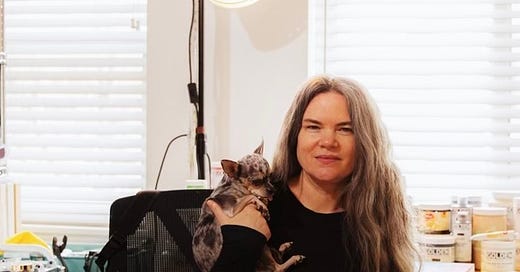




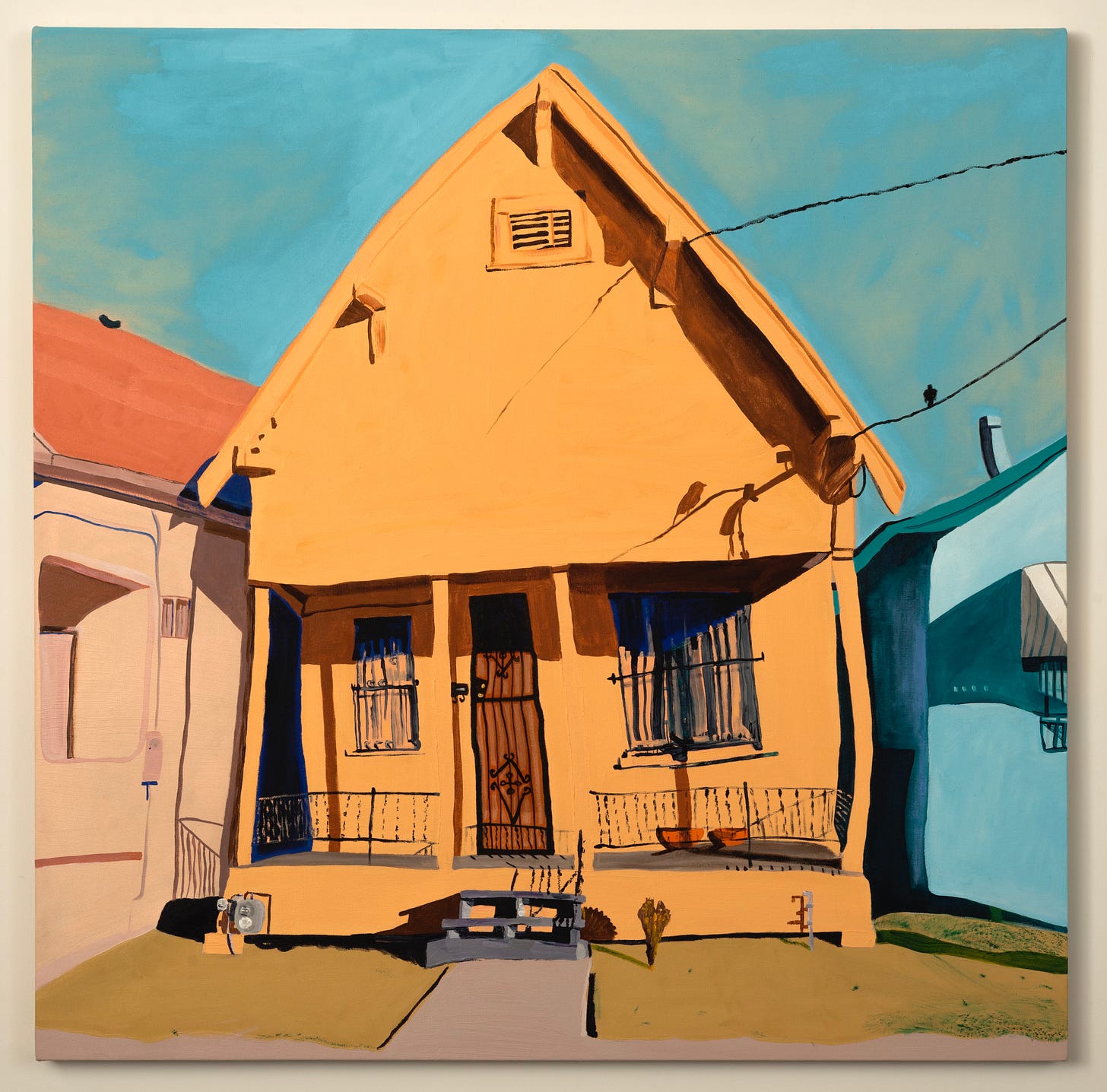

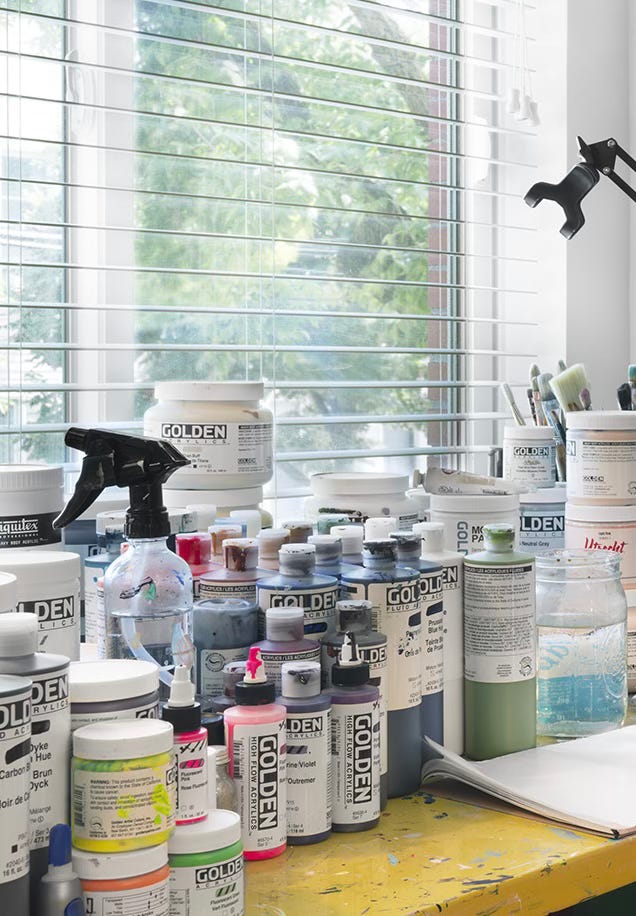
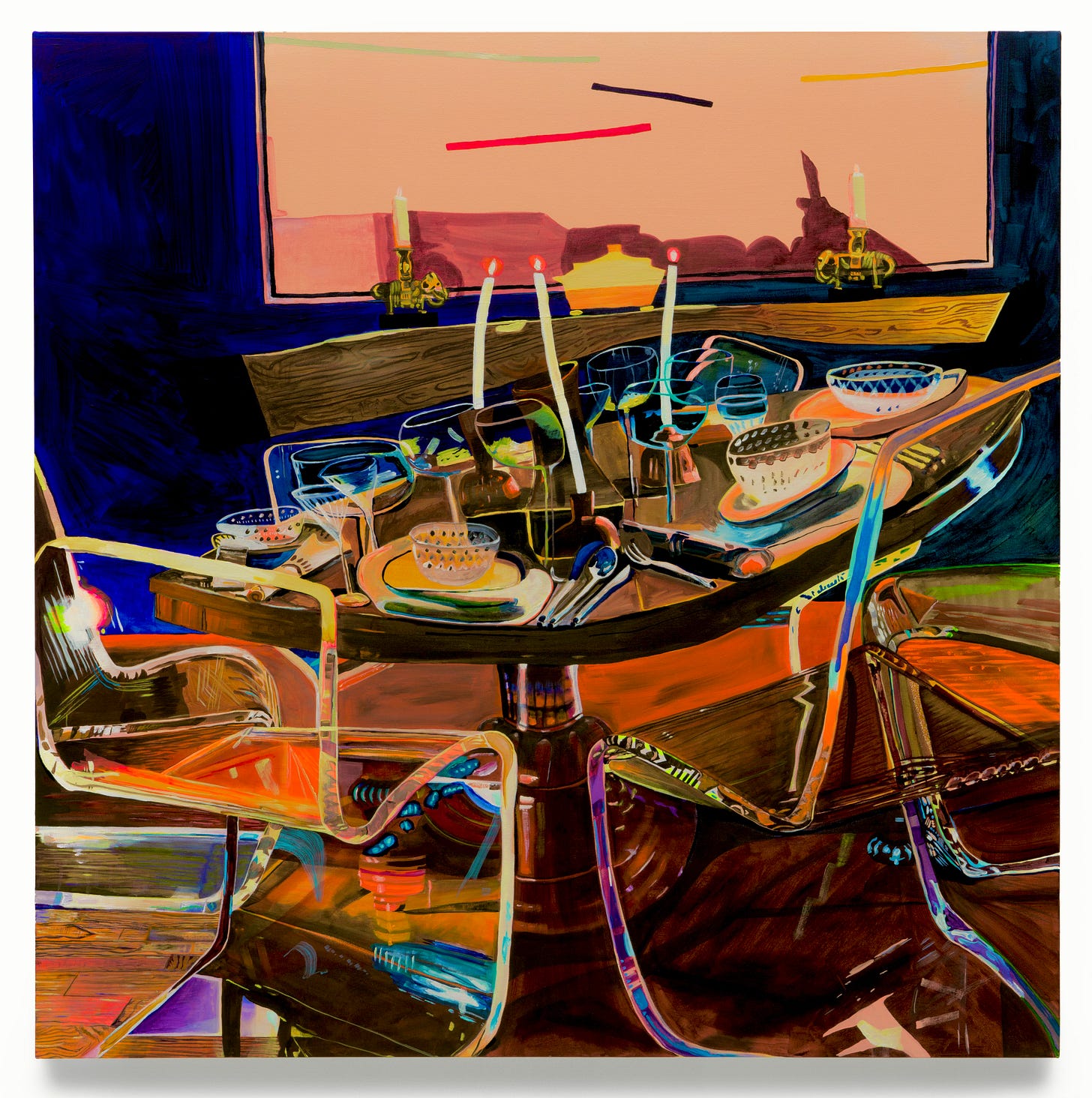
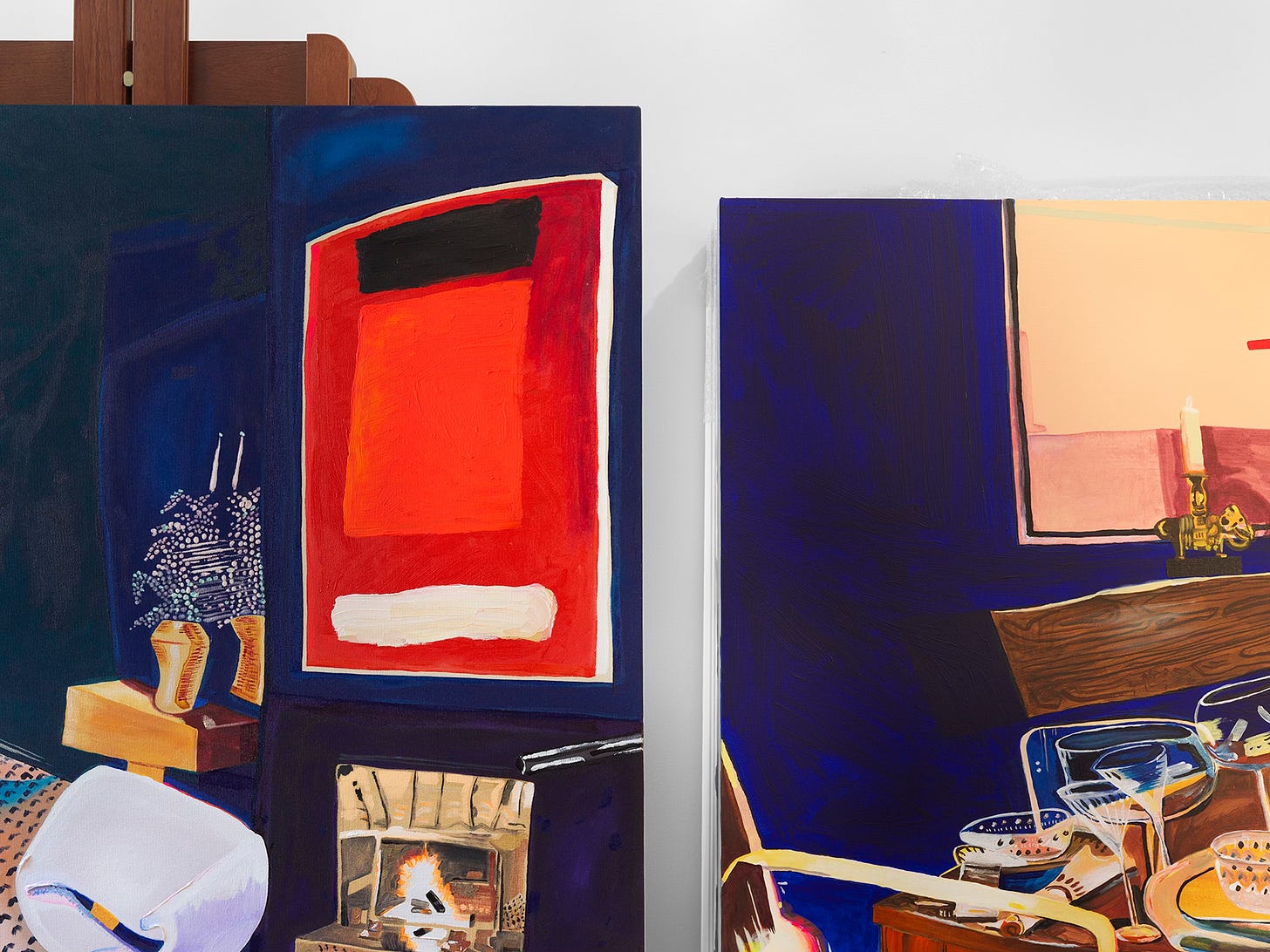
I like your interview format that goes into depth about an artist's practice.
Thanks so much!